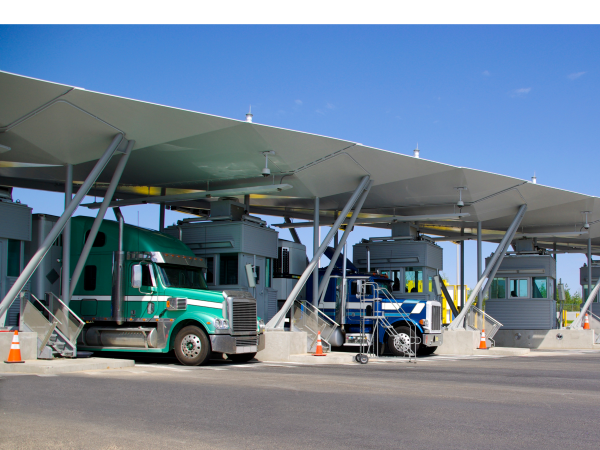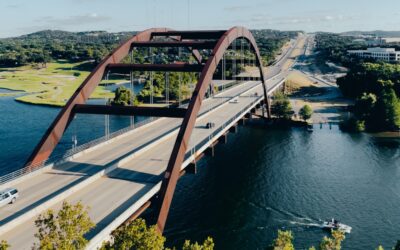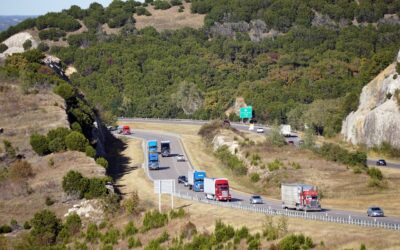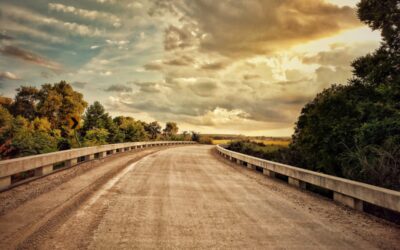Do you have heavy equipment or machinery that you want to ship between the United States and Canada via the Washington – British Columbia border? International heavy haul transport requires you to keep a few things in mind. Being prepared will ensure your shipment goes smoothly and efficiently.
Preparation Before Cross-Border Shipping
Before sending your heavy load on an international journey, you must ensure your driver has all the necessary paperwork and information to cross the border. Failing to present the required documents may result in a delay in your shipment or additional costs. You can easily avoid unexpected cross-border transport costs, resulting in a more efficient trip for your driver. The Canada Border Services Agency and the US Customs and Border Protection have websites with in-depth information on what is required to cross the border.
Working With a Customs Broker
Sending heavy equipment over the border requires paperwork. You’ll need to have your forms organized before your driver picks up your load to avoid delays or unexpected fines at the border crossing. We recommend working with a customs broker, especially if this is your first shipment crossing into the other country. A customs broker will take care of the paperwork for you, help you calculate any applicable tariffs or taxes, and give you peace of mind that your machine will reach its destination.
Border Wait Times and Traffic Cameras
To avoid wasting time waiting in traffic, you may wish to look ahead and see how long you may need to cross the border. Washington and British Columbia have traffic cameras with access to the live feeds online. Checking the cameras before approaching the border allows drivers to inform themselves of current traffic conditions and how long they may be waiting.
Border Crossing Hours of Operation
There are various locations when crossing the border between Washington and British Columbia. Be aware that not all are open 24/7, and not all of them allow commercial vehicles.
Peace Arch Crossing
Connecting Blaine, Washington and Surrey, British Columbia (I-5 joining British Columbia Highway 99)
Hours of operation: 24 hours a day, daily
NEXUS hours: 7am – 11pm daily, into Canada
No commercial vehicles are permitted at this border crossing.
Northbound, there are ten lanes, and southbound, there are ten primary lanes and eight secondary lanes.
Pacific Highway Border Crossing
Connecting Blaine, Washington and Surrey, British Columbia (I-5/Washington State Route 543 joining British Columbia Highway 15)
Hours of operation (travellers and commercial): 24 hours a day, daily
NEXUS hours: 7am – 11pm daily, into Canada
6am – 9pm daily into the United States
This border crossing also has a dedicated fast lane for commercial vehicles.
Northbound there are three truck lanes and five auto lanes. Southbound, there are two truck lanes and six auto lanes.
Lynden Crossing
Connecting Lynden, Washington and Aldergrove, British Columbia (Washing State Route 539 joining British Columbia Highway 13)
Hours of operation (travellers and commercial): 8am – 12am, daily
NEXUS hours: 12pm – 8pm daily
Northbound, there are three lanes, and southbound, there are three lanes, including one truck lane.
Sumas Crossing
Connecting Sumas, Washington, and Abbotsford, British Columbia (Washington State Route 9 joining British Columbia Highway 11)
Hours of operation: 24 hours a day, daily
NEXUS hours: 10am – 6pm daily, into Canada
8am – 11pm daily, into the United States
This border crossing has one truck lane and six auto lanes going northbound and two truck lanes and four auto lanes going southbound.
Things to Keep In Mind for Cross-Border Shipping
Each state and each province will vary in terms of what equipment they transport the most, but no matter what you need to be shipped, Trusted Dispatch is here to help. We pride ourselves on being straightforward, knowledgeable, and helpful. Get started today with a free instant quote.





